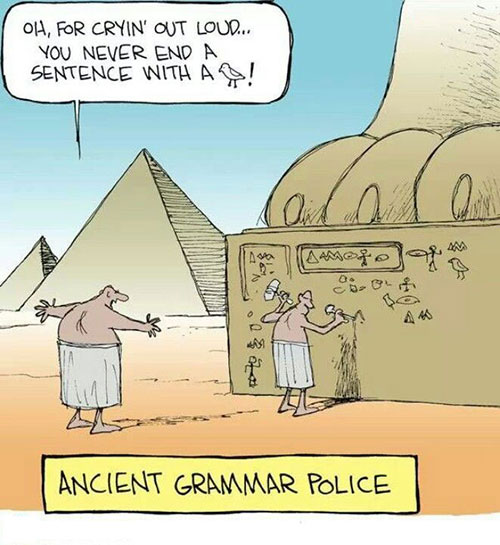|
We're all aware of how vital marked and measured time is to guiding and structuring our days. How then do we treat it in precise and careful writing?
We offered some guidelines in our updated April 2017 article Writing Dates and Times. We'll expand on those here by delving deeper into the most recent editions of two of our primary style references, The Chicago Manual of Style, which commonly applies to formal publications (e.g., fiction and nonfiction books, textbooks, academic reports) and The Associated Press Stylebook, which often helps in advising journalistic and daily writing (e.g., newspapers, magazines, business marketing, and correspondence).
According to CMOS, if we're referring to times of day in even, half, and quarter hours, we would usually spell them out in writing. The number is always spelled out with o'clock.
Examples
With the rain delay, the game probably won't be over until at least ten o'clock.
The men's open-gym basketball games usually end around a quarter of nine. |
When referencing exact times, we would use numerals, including zeros for even hours.
Examples
The class is scheduled to begin at 7:00 this morning.
Our flight leaves at 8:25 tomorrow evening. |
For abbreviated day divisions, CMOS recommends a.m. for ante meridiem (before noon) and p.m. for post meridiem (after noon). These abbreviations also may be set in small caps with numerals.
Examples
9:23 p.m.
7:47 a.m.
6:00 A.M. |
It further points out that a.m. and p.m. should not be used with morning, noon, afternoon, evening, night, or midnight, nor should they be used with o'clock.
Incorrect: 5:45 p.m. in the afternoon
Correct: 5:45 p.m., 5:45 P.M., or 5:45 in the afternoon
Incorrect: six o'clock a.m. this morning
Correct: six o'clock this morning |
For midnight and noon, CMOS advises not to use numbers except informally in an expression such as twelve o'clock at night. Because noon is technically 12:00 m. (meridies, or mid-day), writing or saying 12:00 p.m. (after noon) would be unclear as well as illogical. For certain references to midnight, a double date might be included for clarity: Richard was born at midnight, November 13–14.
AP uses only figures for times and does not include them with noon and midnight. It also omits zeros for even hours and sets day divisions in lowercase letters.
Examples
Breakfast is at 9 a.m.
Lunch is at noon.
The next meeting is at 3:30 p.m.
The observatory program begins tonight at midnight. |
Like CMOS, AP directs to avoid such redundancies as 10 a.m. this morning and 10 p.m. tonight. It also cites o'clock constructions as acceptable but prefers that time be written with numerals and a.m. or p.m.
Time Zones
In scientific theory, Earth has 24 time zones, each a one-hour zone 15 degrees wide to indicate a one-hour difference in mean solar time. Politically, however, time zones are further influenced by how internal and international borders are drawn. Some of these zones have only 30- and 45-minute offsets, increasing the world's total number of zones. The International Date Line also creates three more zones.
(For more information about the world's time zones, as well as the difference between standard time and daylight saving time, click here. Both CMOS and AP agree that the proper term is daylight saving [not savings] time.)
According to CMOS, time-zone descriptions are spelled out and lowercased except for proper nouns. Abbreviations are capitalized.
Examples (using time zones commonly referred to in the U.S.)
Pacific standard time (PST)
mountain standard time (MST)
central daylight time (CDT)
eastern daylight time (EDT) |
Reference to a specific time and zone would follow standard guidelines with the zone in parentheses: 4:42 p.m. (PST), 11:03 a.m. (MDT), 2:30 p.m. (CST), 10:00 P.M. (EST).
AP on the other hand advises to capitalize the full name of each time zone: Pacific/Mountain/Central/Eastern Standard Time. It also abbreviates them with all caps as CMOS does.
It does not set off the abbreviations with commas or parentheses. In addition, it cites them as acceptable on first reference for times used within the continental U.S., Canada, and Mexico only if the abbreviation appears with a specific time (e.g., midnight CST, 11 a.m. MST).
For time references without a specific clock reading, AP directs to spell out time zone (lowercase) and treat the region as proper.
Examples
Mountain time zone
Milwaukee is in the Central time zone.
In California they go by Pacific time. |
How you write time will typically be determined by your format (formal or journalistic/daily). It may also be influenced by your personal preference; the key as always is to choose your style and remain consistent. Combined with our April 2017 article, these guidelines can help you be right on time.
|





